The City’s $30 Million Design Project
National competition for lakefront bridge could have huge impact, but city’s process raises questions.
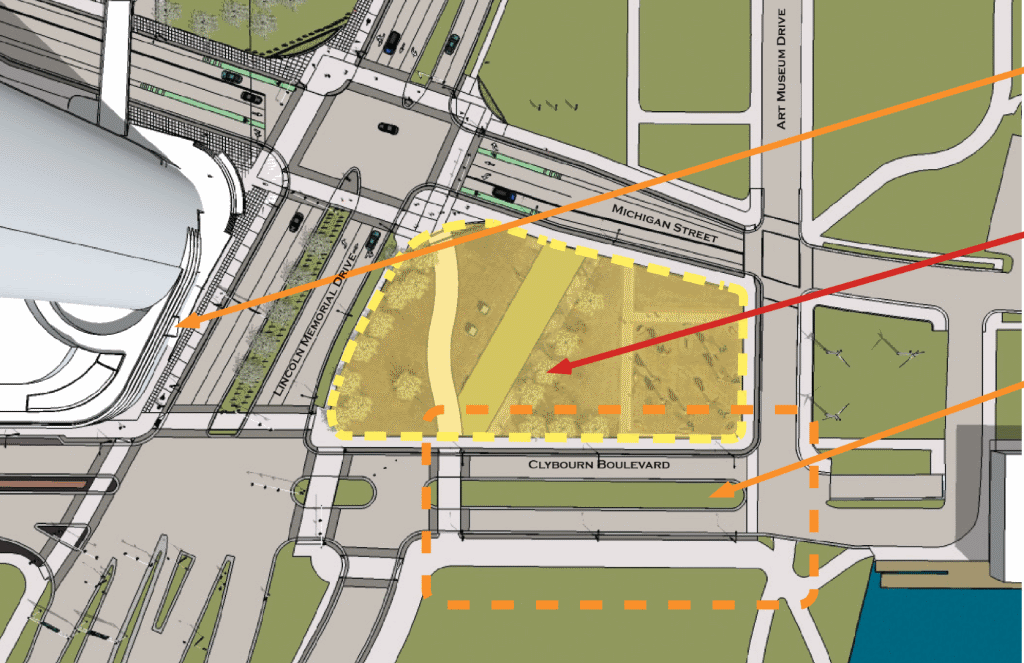 The City of Milwaukee recently and rather quietly announced the four finalists for the National Lakefront Gateway Plaza Design Competition. If this $30 million project goes forward, which is by no means a done deal, it may be the mark Mayor Tom Barrett leaves on Milwaukee’s landscape that could at least fit in the same sentence with Mayor John Norquist’s River Walk. Two mayors connect Milwaukee to two different bodies of water.
The City of Milwaukee recently and rather quietly announced the four finalists for the National Lakefront Gateway Plaza Design Competition. If this $30 million project goes forward, which is by no means a done deal, it may be the mark Mayor Tom Barrett leaves on Milwaukee’s landscape that could at least fit in the same sentence with Mayor John Norquist’s River Walk. Two mayors connect Milwaukee to two different bodies of water.
The design competition is for a pedestrian bridge that became necessary when the state Department of Transportation and the city agreed to significantly widen Lincoln Memorial Drive to make room for more cars instead of people along the lakefront.
The bridge will cross Lincoln Memorial from a green space just east of the proposed Couture and land just west of Discovery World. The bridge will be right in the middle of all the shiny new development in Milwaukee, which includes the Northwestern Mutual Tower, not to mention Lake Michigan.
Calatrava’s bridge from O’Donnell Park to the Art Museum was the first step in the century-long struggle to connect Downtown to the lake. It’s this pivotal site that has attracted national talent to the competition. You can look the finalists and vote for your favorite plan here. A more complete exposition of the proposals will be at City Hall in the fall.
Filling a site of this stature will be a challenge for the Barrett administration, which has never successfully worked with national talent from the design world. The winner of the only other national design competition, Stoss Landscape Urbanism, which created a plan for Erie Plaza in the Third Ward, was asked to make significant changes to a once-excellent design. That’s a long and disappointing story, but let’s just say the Barrett administration and Department of City Development (DCD) have yet to truly execute a design of national caliber.
The Gateway Project is much more daunting. There are still some loose ends, starting with The Couture, where the bridge originates and whose developers still need to raise money for the project. And this will be the first time Barrett tries to raise significant private funds to create a new civic space; the way the some of best public spaces, Millennium Park in Chicago and the High Line in New York, were funded. The Calatrava addition to the Art Museum is a similar story. It takes a crazy good idea, something special to inspire the elite of our city to pony up the 25 to 35 million dollars (the cost parameter that design entrants were asked to work within) to complete a project like this.
Your vote “will be taken into consideration” by a secret panel of “stakeholders” according to Vanessa Koster, planning manager at the Department of City Development. Koster elaborated in an email: “Projects of this magnitude are achieved by involved stakeholders — which we engaged in the process — coalescing around the downtown comprehensive plan vision.” Whatever that means.
In off-the-record conversations with sources, it’s become clear the “stakeholders” are the neighbors who have a direct economic interests in the property, such as The Couture, Art Museum, and Discovery World for starters. That suggests the city is treating this space more like a real estate than a public good in the form of a park. Barrett’s spokesperson Jodie Tabak tells Urban Milwaukee “the panel has representatives from neighboring institutions and people with strong credentials in design. Until the panel finishes its review, we are keeping the members’ names confidential.”
I asked Koster if the panel included anyone representing the public-at-large who, say, uses the lakefront on a Sunday afternoon? She wouldn’t say, or even reveal how many people are on the panel.
Koster says the secrecy preserves the “integrity of the RFP evaluation process.” She says they modeled the process on “other national competitions such as the High Line in New York, Millennium Park in Chicago and the St. Louis Arch.”
But the St Louis Arch was a public process and the seven-member jury that chose the design was publicly revealed. The High Line was a partnership between the community organization “Friends of the High Line” and the city, who chose the designers. It was a more open and broader-based process than Milwaukee’s. Millennium Park was done the Chicago way, ramrodded by Mayor Richard Daley, but he put a trained architect in charge, Edward Uhlir, who had served for years as chief architect of the Chicago Park District, and also consulted curators at the Art Institute of Chicago.
Important public projects like this usually aren’t conceived in secret. More transparency in government wards off suspicion of back-room deals and conflicts of interest. For example, the architect for The Couture just happens to be one of the finalists. City officials insists the project will go forward without The Couture, but it’s the linchpin of the project. Jeff Fleming, spokesperson for DCD said they have “taken precautions to insure there is not a conflict,” but declined to say what those were.
Working behind closed doors is probably a fundraising strategy rather than a safeguard for the “integrity” of the process. It seems like an implicit pay-to-play situation. Unlike the High Line, which had a community-based nonprofit organization and a strong mayor who raised money, the city will likely first go back to the stakeholders for large contributions.
It sounds like the city will be relying almost entirely on private money to fund the project. “Financial contributions from outside government are essential if the project is to move forward,” Tabak says. “City government has made an initial investment in the stipends for the finalists [each finalist was paid $20,000 to complete their proposed design], but city government will not be in a position to finance the entire project.”
The chosen design — and designer — could be crucial: it could play a huge role in how successful the city is raising money for the project.
There are four finalists for the design competition. Who will win? Which one of the four entrants offers the best design? In my next story I’ll answer both questions.
Political Contributions Tracker
Displaying political contributions between people mentioned in this story. Learn more.
- July 10, 2018 - Tom Barrett received $50 from Jeff Fleming
- September 14, 2017 - Tom Barrett received $35 from Jeff Fleming
- September 14, 2017 - Tom Barrett received $40 from Vanessa Koster
- April 2, 2016 - Tom Barrett received $100 from Vanessa Koster
- March 22, 2016 - Tom Barrett received $400 from Jeff Fleming
- August 29, 2015 - Tom Barrett received $100 from Jeff Fleming
In Public
-
The Good Mural
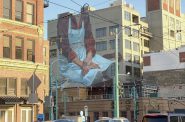 Apr 19th, 2020 by Tom Bamberger
Apr 19th, 2020 by Tom Bamberger
-
Scooters Are the Future
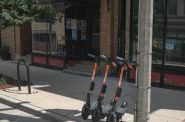 Dec 19th, 2019 by Tom Bamberger
Dec 19th, 2019 by Tom Bamberger
-
Homeless Tent City Is a Democracy
 Aug 2nd, 2019 by Tom Bamberger
Aug 2nd, 2019 by Tom Bamberger


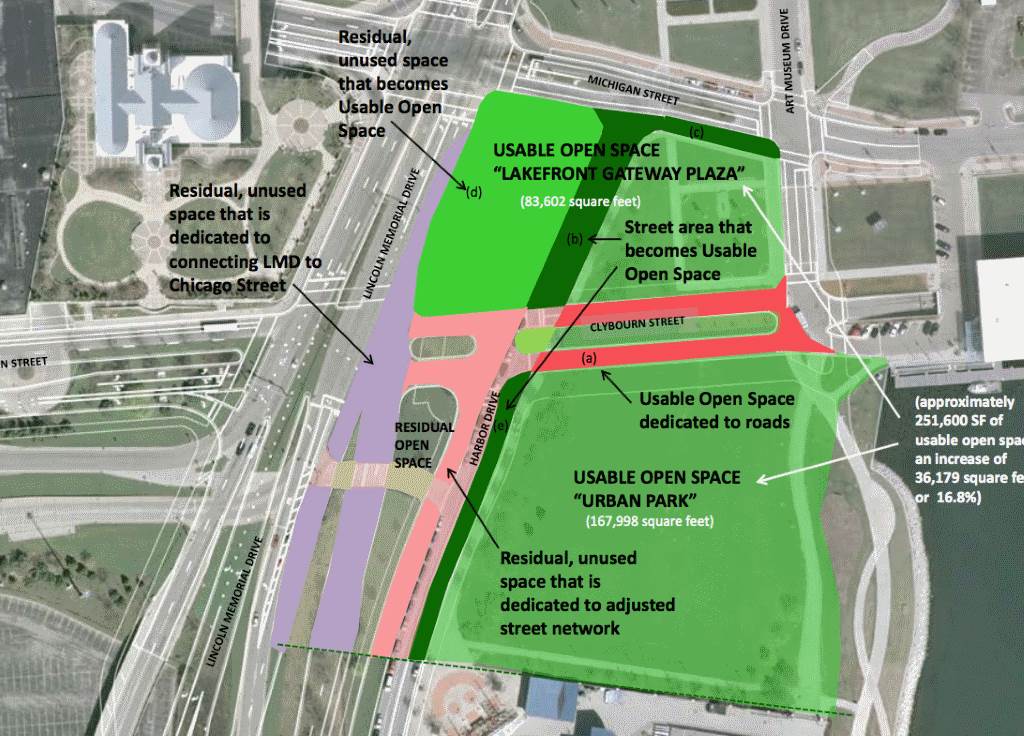
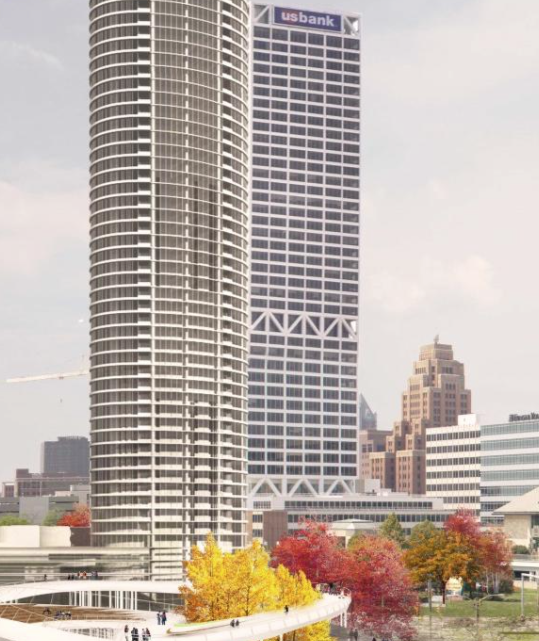




















“That suggests the city is treating this space more like a real estate than a public good in the form of a park.”
Full community engagement does not seem to play a big role in some major public-works projects in Milwaukee (this, the arena). The streetcar is perhaps an exception. As Tom notes, there is no community-based nonprofit involved in this (as Menonomonee Valley Partners and Urban Ecology Center did in driving creation of Three Bridges Park in the MV).
It’s interesting that bridge designs all pass through O’Donnell Park, which County Executive Abele has been relentlessly pushing to sell for private redevelopment during this entire process. Last month Abele almost got the state to let him do that and thwart MAM’s efforts to preserve the park and maintain museum access. And the county, which owns much lakefront land, is listed as an LG project sponsor.
The Couture will supposedly include “public spaces” (whatever that means). Does anyone know how Abele views public civic spaces?
Snooze.
Doesn’t it get tiring looking for controversy in everything happening in this city?
M,the streetcar is being done without the community getting a chance to vote on it, let the people that will have to pay for it decide
Yes let’s put literally everything to a vote. To heck with representative democracy. Who needs it really?
Ho Hum The end result will be terrible, the city ( public value) doesn’t know how to deal with great design projects. I shudder to think what the end result will be…..a berm with trees and lawn yawn!
PMD, when we are talking about something that will cost the city taxpayers hundreds of millions of dollars, yes it should be voted on.
With all the astonishing, positive momentum that is building up in Milwaukee, it amuses me that there are still so many negative people convinced it’s all sordid. Some people can only see two dimensions in a three dimensional world.
mbradleyc:
All the astonishing, positive momentum that results in positive built projects occur from the private sector,we’re talking public( city) here. I will remain two dimensional until I see the results.
So Paul every project that could potentially reach a certain dollar amount should be held to a vote? Or just projects you personally disapprove of?
PMD, any project that has the potential of costing the city ( with all the extended routes ) a billion dollars, yes, yes a billion times yes
As long as we’re just making up numbers, I heard it’s a trillion dollars. They’re going to build an extension across Lake Michigan in phase 3.
PMD, I heard phase three was actually a teleportation device to cross the lake. I don’t know if that actually counts as an “extension” per se. And it was trillions with an ‘s’ on the end.
Right you are AG. Teleportation means no track maintenance, so while expensive, in the long run it means trillions doesn’t become tens of trillions.
PMD, I’m not making up numbers, look at average cost per mile times the number of miles being proposed.
Well, at least there is an opportunity for public comment on the design, unlike the arena which will be a major public expenditure for a building owned by the public. As to the secret panel and deliberations, I seem to recall some discussion in the media recently about a law that allows the media to request, and requires the government to produce, documents and records maintained by the government, including email. If I recall correctly, the law is commonly referred to as “open records”.
“Keeping the names confidential”. Isn’t this like Gov. Walker’s claim of deliberative process privilege when denying open records requests?
Paul, you’re using average cost per mile based on the cost of an initial start up system and the costs of building the system in the most expensive part of the city with the most underground utilities and other obstacles. It is not realistic to simply expand the costs at that rate.
AG, then you tell me what the total cost of all the planned expanded routes will be. My estimate is over $800 million.